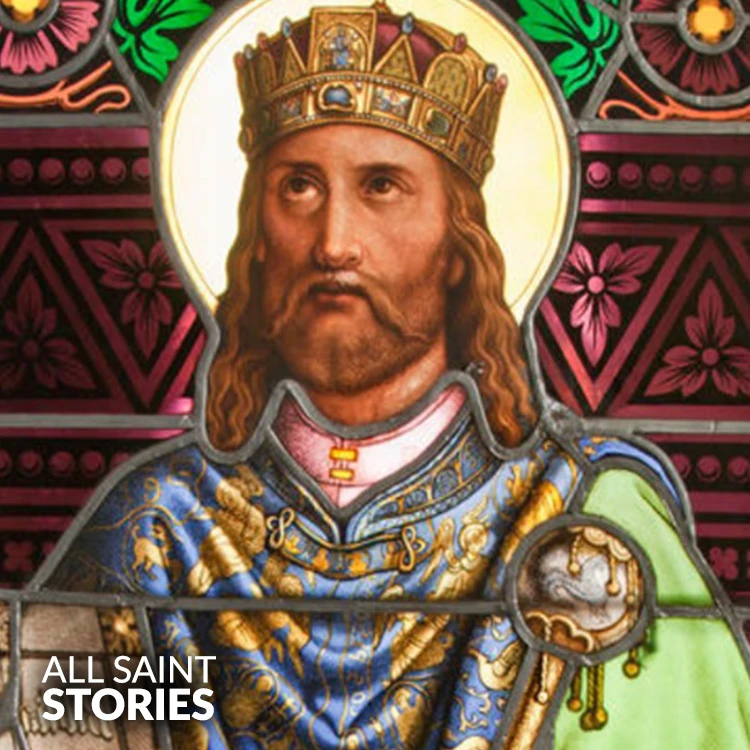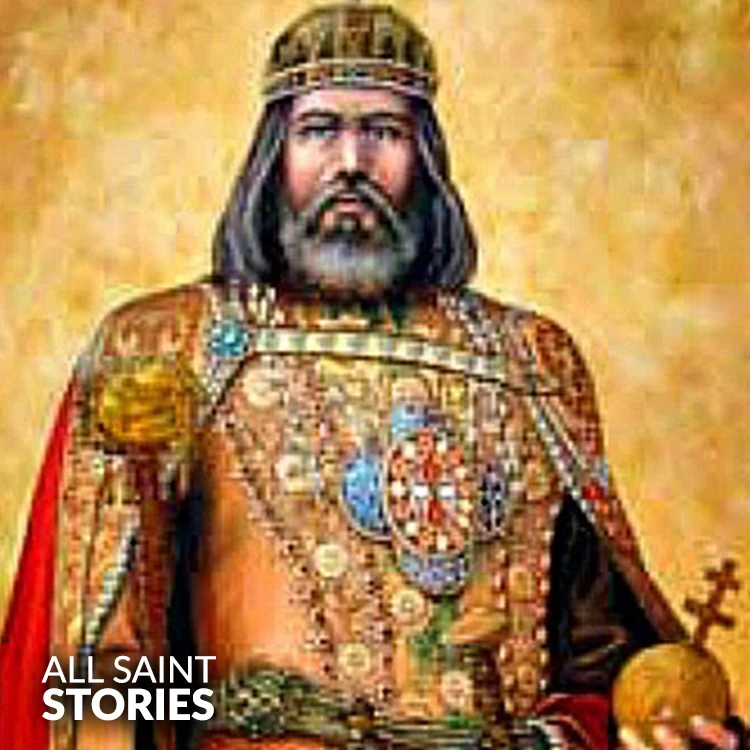St. Stephen, King of Hungary, Guide and protector of the Hungarian people, Intercede for us before God, That we may live in faith, humility, and love. Help us to follow Christ with the same dedication That you showed in your service to God and your country. Grant us wisdom, courage, and peace, So that we may build a just and holy life. Through your intercession, May we receive God's blessings. Amen.
ST. STEPHEN OF HUNGARY
ST. STEPHEN OF HUNGARY

St. Stephen of Hungary was the first King of Hungary and a key figure in the Christianization of his nation. A wise and devout ruler, he built churches, established dioceses, and spread the faith. Canonized in 1083, he is Hungary's patron saint.
St. Stephen of Hungary, born on August 20, 975, in Esztergom, was originally named Vajk, a pagan name, before being baptized as Stephen. His father, Duke Géza of Hungary, began the process of Christianizing the Hungarian people, and Stephen carried forward this mission with profound zeal and dedication.
Stephen was married to Gisela of Bavaria, sister of the Holy Roman Emperor Henry II, which strengthened Hungary's ties to Western Christendom. Upon the death of his father, Stephen ascended to the throne around the year 1000. With the blessing of Pope Sylvester II, he was crowned as the first Christian king of Hungary on Christmas Day, and received a crown sent from the pope himself — which later became a national symbol of Hungary.
Determined to unite his kingdom under Christianity, Stephen implemented a policy of forced conversion, though he also protected Church property and worked diligently to establish ecclesiastical infrastructure. He founded numerous dioceses, built churches and monasteries, and invited foreign missionaries to aid in spreading the Gospel.
Stephen was not only a builder of the Church but also of the nation. He organized Hungary into counties, administered laws based on Christian principles, and was known for his fairness and wisdom. His laws promoted Christianity, justice, and the welfare of the poor. His devotion to Mary was especially notable; he entrusted his kingdom to her, declaring her the patron and queen of Hungary.
Despite facing resistance and revolts from pagan factions, Stephen maintained his rule with a blend of firmness and piety. His only son and heir, Emeric, died tragically in a hunting accident, and the grief deeply affected him.
St. Stephen died on August 15, 1038, and was buried in Székesfehérvár Basilica. His relics became important symbols of Hungarian identity. He was canonized in 1083 by Pope Gregory VII, along with his son, St. Emeric. His feast day is celebrated on August 16, and he remains a central figure in Hungary’s national and religious history.
Video Not Found
The information on this website is compiled from various trusted sources. While we aim for accuracy, some details may be incomplete or contain discrepancies.
If you notice any errors or have additional information about this saint, please use the form on the left to share your suggestions. Your input helps us improve and maintain reliable content for everyone.
All submissions are reviewed carefully, and your personal details will remain confidential. Thank you for contributing to the accuracy and value of this resource.
Credits & Acknowledgments
- Anudina Visudhar (Malayalam) – Life of Saints for Everyday
by Msgr. Thomas Moothedan, M.A., D.D. - Saint Companions for Each Day
by A. J. M. Mausolfe & J. K. Mausolfe - US Catholic (Faith in Real Life) – Informational articles
- Wikipedia – General reference content and images
- Anastpaul.com – Saint images and reflections
- Pravachaka Sabdam (Malayalam) – Saint-related content and insights
We sincerely thank these authors and platforms for their valuable contributions. If we have unintentionally missed any attribution, please notify us, and we will make the correction promptly.
If you have any suggestion about ST. STEPHEN OF HUNGARY
Your suggestion will help improve the information about this saint. Your details will not be disclosed anywhere.
© 2025 Copyright @ www.allsaintstories.com



 English
English
 Italian
Italian
 French
French
 Spanish
Spanish
 Malayalam
Malayalam
 Russian
Russian
 Korean
Korean
 Sinhala
Sinhala
 Japanese
Japanese
 Arabic
Arabic
 Portuguese
Portuguese
 Bantu
Bantu
 Greek
Greek
 German
German
 Dutch
Dutch
 Filipino
Filipino